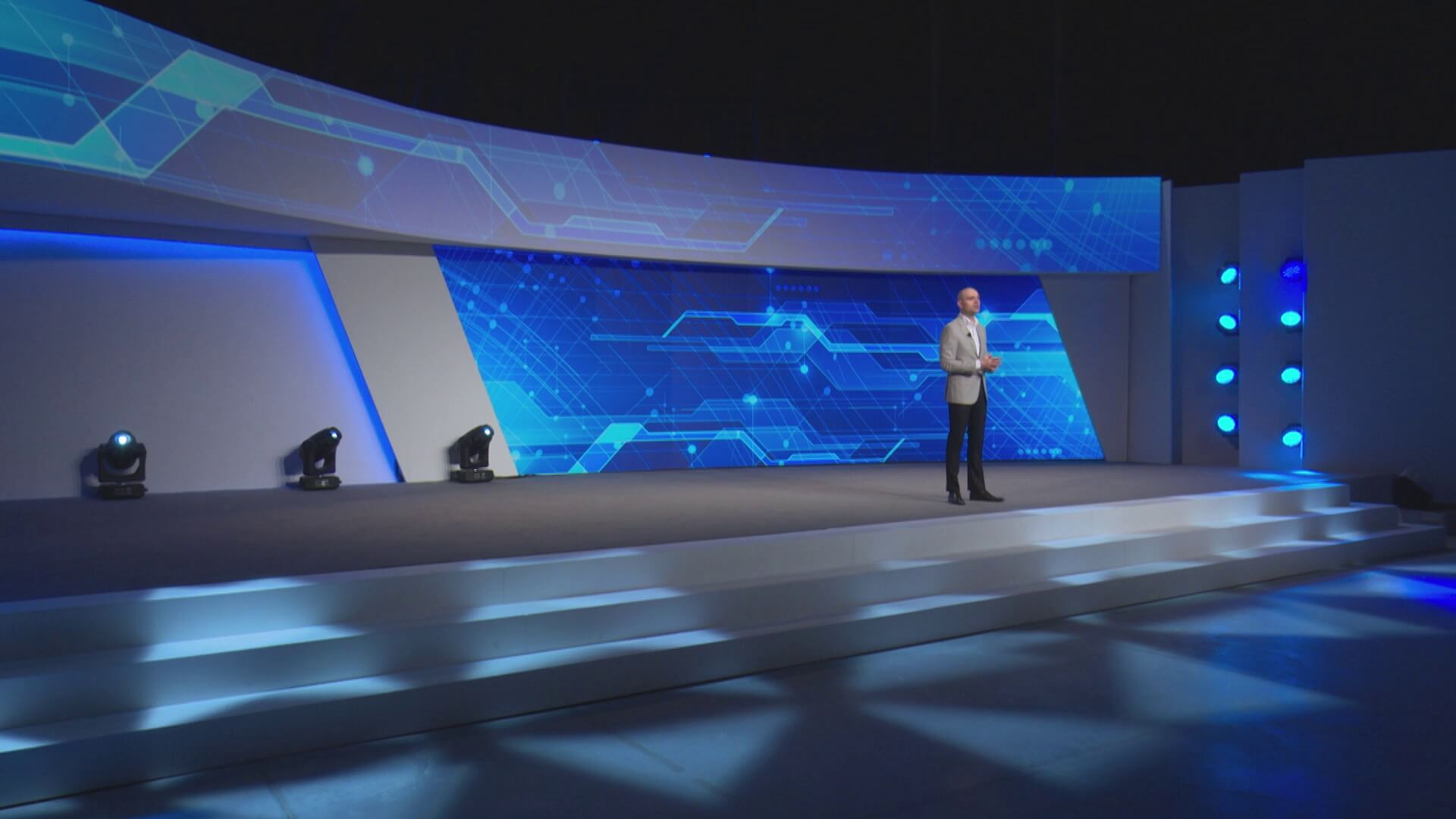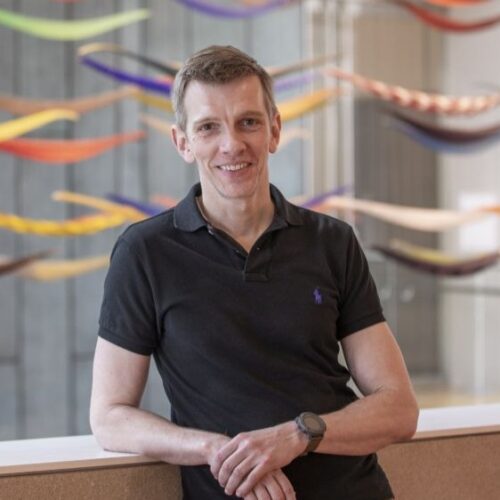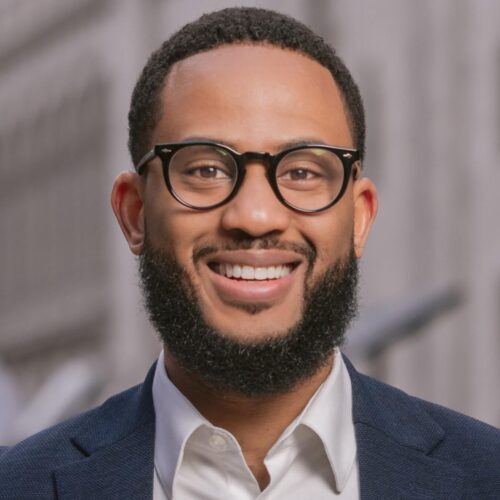How to Be a Futurist [Without Predicting the Future]
Podcast: Play in new window | Download | Embed
Subscribe: RSS

A few weeks ago, a client asked me to give a virtual keynote on futurism. The client was pretty happy with how it turned out, so I thought I’d share it publicly. This way, you can hopefully enjoy, share, and benefit from it too. 😉
How to Be a Futurist [Without Predicting the Future]
Foresight is not about predicting the future; it’s about minimizing surprise.
Famous physicist Sir Isaac Newton saw our universe as a pool table. Given that everything follows the laws of nature, Newton argued, if one knows the direction and the force behind each billiard ball, or each particle in the universe, one will be able to predict the future and what comes next. Needless to say, this is a pretty deterministic view that leaves no space for personal freedom, not to mention that it turns us all into mere billiard balls.
So, in a way, it is not surprising that the most common question people ask as soon as they find out I am a futurist is to predict the future and what comes next?
Well, today we live in the age of Google. So answers are free. Good questions, however, can be priceless because the better the question that we ask the better the answer that we are going to get. So the value is moving away from the answers and towards the questions.
Therefore, the question about predicting the future and what’s next, popular as it is, needs to be put into proper context so that we can see if it is the right question to ask in the first place.
In quantum physics, there is this phenomenon called the “observer effect” also known as “the measurement problem.” It refers to the impact that the act of observing produces on a phenomenon thereby highlighting the inextricable dynamic relationship between the “subject” and the “object.”
In essence, the observer effect leads to a rejection of Newtonian determinism because it shows that we live in a universe whose present is not simply “the effect of the past” or “the cause of its future.” So Quantum mechanics tells us that nothing can be measured or observed without disturbing it.
Furthermore, quantum physics annihilates the possibility of a strict dualism between the subject and the object, presenting them in a dynamic relationship where each is relational and reciprocally constituting the other.
I believe the same points hold true about the present and the future:
- The present and the future do not follow a simple deterministic path.
- They are not simply the cause and effect of each other but are liable to exhibit the observer effect so they are influenced by us.
- They don’t have a dualistic relationship of simple opposites but share a dynamic relationship where each is relational and constituting the other. So we can’t really put a hard line between the present and the future.
And, thus, to paraphrase Albert Einstein in our current context, there is spooky action from the distance of our present and well into the future.
Now, some have called the future a chaos system. And we know that there are 2 types of chaotic systems:
Level 1 chaos does not react to predictions about it. The best example of level 1 is the weather. It is an extremely complex type of chaotic system but we can model it, make computer simulations and then come up with predictions about the weather in a particular location at a particular time in the future. And, right or wrong, the weather itself will not be influenced by our prediction, one way or another.
The future in general, however, is what is called a Level 2 chaotic system. And the problem with level 2 chaos is that it reacts to predictions and therefore can never be predicted fully. One example of that is the stock market.
Imagine we have a computer program or some other way to make a 100% accurate prediction about the price of oil tomorrow. As soon as word gets out, people will adjust their expectations and the market price of oil will react to the forecast which will consequently fail to materialize. This is even more true of political and other major complex chaotic events such as revolutions, terrorist acts, political assassinations, even pandemics. The French Revolution, the American Revolution, the Russian Revolution, the collapse of the Soviet Union and the Arab Spring were all predictably unpredictable. Because revolutions are by their very nature, and definition, unpredictable, since a predictable revolution never succeeds.
And that is why the future is always surprising in one way or another. Because, as I said before, it is entangled with the present in a dynamic relationship and hence it is responsive to everything we do or fail to do.
So what is futurism then and why should we care about it if it doesn’t help us predict the future?
Well, we do futurism not to know the future but to widen our horizons, to understand how our present is neither natural nor inevitable and to find more future possibilities than we can currently imagine. That is why, in contrast to astrologers and palm readers, good futurists don’t make predictions. At best, we can identify the major drivers and, if we’re very skilled and very lucky, most of their impact. But we remain humble because we know that the future will surprise us in many, if not most ways that matter.
In other words, when it comes to the future, we are all driving in the dark, but futurism or foresight is like turning on our headlights. It allows us to see the road ahead much further down as well as the obstacles that are either already there or are currently on the side but could potentially end up in front. And it helps us to keep going towards our chosen destination.
To put it in bullet points futurism helps us accomplish 3 main things:
- It helps us identify certain signals that can manifest as either dangers or opportunities or both.
- It helps us game out possible, probable and preferable future scenarios and prepare for them.
- It motivates us to envision and create our own image of the future.
Let’s skip 1 and 2 for a moment and focus on 3. And let me ask you a question:
What is your image of the future? When you think of the future, what do you see? And are you looking 2 months, 2 years or 20 years?
Because “the future” is different for each one of us since it doesn’t exist outside of our imagination and since we all have a different timeline.
So when Henry Ford asked that question, he saw a car for every family and mobility for the masses. When Steve Jobs asked that question, he saw tools for the mind that will change humankind. When Bill Gates asked that question, he saw a computer on every desk in every home. When Elon Musk asked that question, he saw a transition to sustainable energy and a multiplanet species.
But the question is what do you see?
Because the future begins first as an image or a story. So would you rather borrow that image from someone else or would you rather be the author of your own story? Because I’m not convinced that Steve’s, Bill’s or Elon’s image is the one best for us – be it personally or collectively. And since the future and the present are entangled that means that the future creates the present just as much as the present creates the future. As Futurist Barbara Hubbard pointed out “As we see our future, so we act; as we act, so we become.”
Now let’s go back to points 1 and 2 about identifying signals and gaming the consequent future scenarios. Some of the drivers here are things such as disruptive technology or global shifts such as climate change or demographics. One of the common elements among those is that at least in the short to medium term we can’t control them. And things that fall outside of our control make us uncomfortable because they are uncertain. Of course, one of the reasons people want to predict the future is because we find comfort in certainty. This helps us maintain a sense of control that provides the perception or, perhaps, the illusion of security. But uncertainty creates opportunity.
So, for example, two people can look at the exact same technological, demographic, political, natural, or scientific development and one can experience fear and confusion while the other can come up with a brilliant idea. And it is their respective image of the future aided by what I call a futurist mindset that often account for the difference.
Now, compared to luck, futurism requires us to do the work, to pay attention to signals and trends, and to keep ourselves open to the unexpected. So, the key is to relax and let the process work. A process of finding the tricky balance between the unknown and the things we can’t control – on the one hand, and the things we can focus on and act upon now to adapt to the unknown, avoid the dangers, and utilize the opportunities – on the other hand.
Of course, this is much easier said than done but let me share a couple of examples to help us see how the process works.
Think about surfing. A surfer does not control the waves but they can control their skill of understanding and riding the waves as well as their image of the future. So, a normal person sees a hurricane as a danger to be avoided. But to some surfers, that same storm is the ideal image of the future. When we see a 100-foot wave it looks deadly so the idea of voluntarily trying to ride that wave seems insane. But to a surfer, it looks like a unique opportunity. It’s the same storm, the same wave but we end up with 2 diametrically opposed perceptions and reactions to it where one person runs away, another runs towards it.
This example may be scary but the same principle works also in sailing and many other fields.
A sailboat captain cannot change the winds. Those are external forces of nature outside of her control. However, having studied the weather trends, including those of the winds, and knowing the characteristics of her boat, the captain can identify her preferable destination and then chart and execute a sailing itinerary to reach it. So a good captain with a sea-worthy sailboat can go anywhere she wants.
This is how futurism is supposed to work. And that’s why you can say famous hockey player Wayne Gretzky was a futurist. Because he couldn’t control the game, he couldn’t control his teammates let alone the opposing team, but he learned to identify signals and trends which allowed him to go as he said “not where the puck was but where the puck was going to be.”
In other words, futurism is a mindset that can be applied to any field. When you think like a futurist, you pay attention to what’s going on, you identify signals and trends, and then develop scenarios based on the likelihood that any of those can affect things you care about. You then develop timelines to estimate when these expected impacts will occur, because sometimes being too early is worse than being a little late. Finally, you play out a spectrum of actions to avoid the dangers and take advantage of the opportunities while constantly monitoring how the situation is changing. More or less, this is the gist of futurism.
That is why there is no such thing as predicting the future. By observing or refusing to observe, by taking a passive or active stance, but adopting someone else’s or by creating our own image of the future, one way or another, we create it.
So, asking: “What comes next?” Asking “What is the future?” are the wrong questions. Because we can’t stop the waves but we can learn to ride them. Just like we cannot control the wind but we can control the sail. A better set of questions to ask is this: What is my image of the future? What current trends or changes can threaten or help me create it? How can I take advantage of those so that I ride the waves rather than get drowned by them?
This is how having a futurist mindset can help us navigate and weather a crisis and guide us to prosperity both personally and professionally. But, within that process, the one element that makes the biggest difference both for ourselves but also for those around us is our image of the future.
Because there is no escape. One way or another, consciously or not, the things we do reflect and spread the image of the future that we have. And that image of the future determines not only our emotions but also our attitude. But our emotions and attitude motivate us to act or not to act. That is why time and time again our image of the future – be it personally or collectively, becomes a self-fulfilling prophecy. And one of the best ways of changing ourselves today is by simply changing our image of the future.
So other futurists and technologists may talk to you about future shock and exponential technologies such as genetics, robotics, nanotech, AI, synthetic biology, blockchain, and NFT’s. Or they can geek about the distinction between a signal and a trend. But I would argue that we ought to start with our image of the future. It is then we should seek to identify signals and assess how trends may threaten or help us create it.
So, to conclude, a good futurist is simply a storyteller. Because as Cory Doctorow says, predictions tell us that the future is inevitable, but stories tell us that the future is up for grabs. That is why Frank Herbert warns us in Dune that to know the future for sure is to be trapped because the present becomes prison. And I would add that a future you can’t change, where we are all but billiard balls, is not a future worth worrying about. But a future we are free to reach for and create is worthy of our best.
Thank you!








